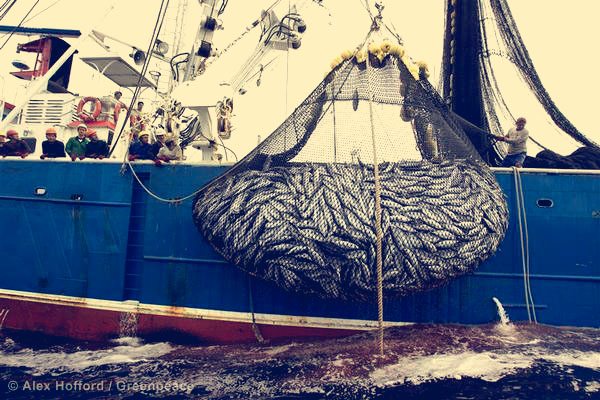The Western and Central Pacific is home to the last healthy tuna fisheries, making up approximately 60 percent of the worlds annual catch. This wealth of tuna has attracted more and more boats as tuna catches in other oceans have declined. Now there are more fishing boats in the Pacific than the tuna stocks can sustain, with both bigeye and yellowfin tuna in decline. Its a classic case of too many industrial boats chasing too few fish, in a context of lack of adequate management of fishing capacity.
The US has played an important role in this process. The US Multilateral Treaty, signed back in 1987 gave access to up to 40 purse seine vessels to fish in the waters of 16 Pacific island countries’ EEZs in exchange of an access fee. Until few years ago the US had was underutilizing the treaty with only 18 vessels fishing in the region. However, between 2006 and 2009 the US increased its fleet in the area from 18 to 39 vessels.
This sharp increase has created significant problems in the region where overfishing and too many fishing vessels were already pressuringtuna stocks. This increase happened in parallel to the entry of foreign capital, particularly Taiwanese, into the US industry. In this way, the US flag became a flag of convenience for Taiwanese fishing operators, which could make use of under-used fishing capacity in the US to increased access to the Western Pacific tuna resources.
The US seine fleet also turned out to be one of the most destructive ones in the region, as the fleets are very dependent on the use of fish aggregation devices or FADs that increase the catches of vulnerable bigeye and yellowfin juvenile tuna and other bycatch such as sharks in the skipjack fisheries. The poorly regulated use of this fishing method has caused severe declines in the stocks and is in need of immediate management actions.
In addition to the problems posed by increasing pressure on the stocks, such increases don’t seem to have brought benefits to the local economy. While 25 members of the U.S. tuna fishing fleet are subsidized by the American taxpayer to the tune of $18 million per year to fish in the South Pacific Tuna Treaty Area, the amount of jobs created in the US is marginal: of the 39 US flagged tuna seiners, there are only 60 US citizens out of approximately 1,050 total crew members. On 24 vessels, the only US citizen is the master.
Besides this increased expansion of the US fleet in the Western Pacific at a time where tuna resources are increasingly scarce there have also been a number of incidents of IUU fishing, some of them very recent. In August of 2013, there were two major enforcement cases in the Pacific involving U.S. purse seine vessels. The American Triumph was found guilty of setting nets six times on or near a fish aggregating device (FAD) and also of deploying a FAD during the closed season, resulting in a fine of $562,068. In the second case, the Ocean Encounter, Ocean Conquest, Sea Honor, Sea Quest and Pacific Ranger were found guilty of five counts of setting purse seine nets on whales, and ten counts of setting on or near a FAD and two counts of deploying FADs during a FAD closure, and were fined $953,054.
The case of the expansion of the US tuna capacity in the Pacific poses the important question of whether management of fishing capacity should be left to market forces and the decisions of powerful international investors. Greenpeace has just released a new report where it addresses the need for a concerted action to ensure that fishing capacity is kept within sustainable levels and that this is done in a way which maximizes social and environmental benefits from fishing.
Reducing the capacity of any fishery is always a contentious issue. In order to address this issue fairly, Greenpeace has developed the following criteria to ensure that capacity reduction takes into consideration social and environmental considerations:
Selectivity fishing methods with low by-catch;
Environmental impact less destructive fishing methods;
Energy consumption vessels and fishing methods consuming less energy per tonne of fish caught;
Employment and working conditions fishing methods that provide more and better employment conditions, compliant with international standards;
Socioeconomic benefits greater direct income to and investment in the region derived from the fishing operations;
Compliance and data provided history of IUU fishing, compliance and data reporting
Quality of product gear types providing the best quality of fish for human consumption.
The US purse seine fleet has multiple vessels that clearly fail to meet these criteria, making them obvious choices to be the ones to leave this fishery first. The Western and Central Pacific Ocean is in urgent need of fishing capacity reduction and effective controls on fishing effort, and the US has NO valid excuse not to be part of the solution. Greenpeace calls on the US to start a process of proper assessment and capacity reduction of the US fleet based on these principles and to support an immediate cap on the number of purse seine and longline vessels as well as a ban on the use of FADs in purse seine fisheries in the upcoming Pacific tuna commission meeting in Cairns, Australia next week.



